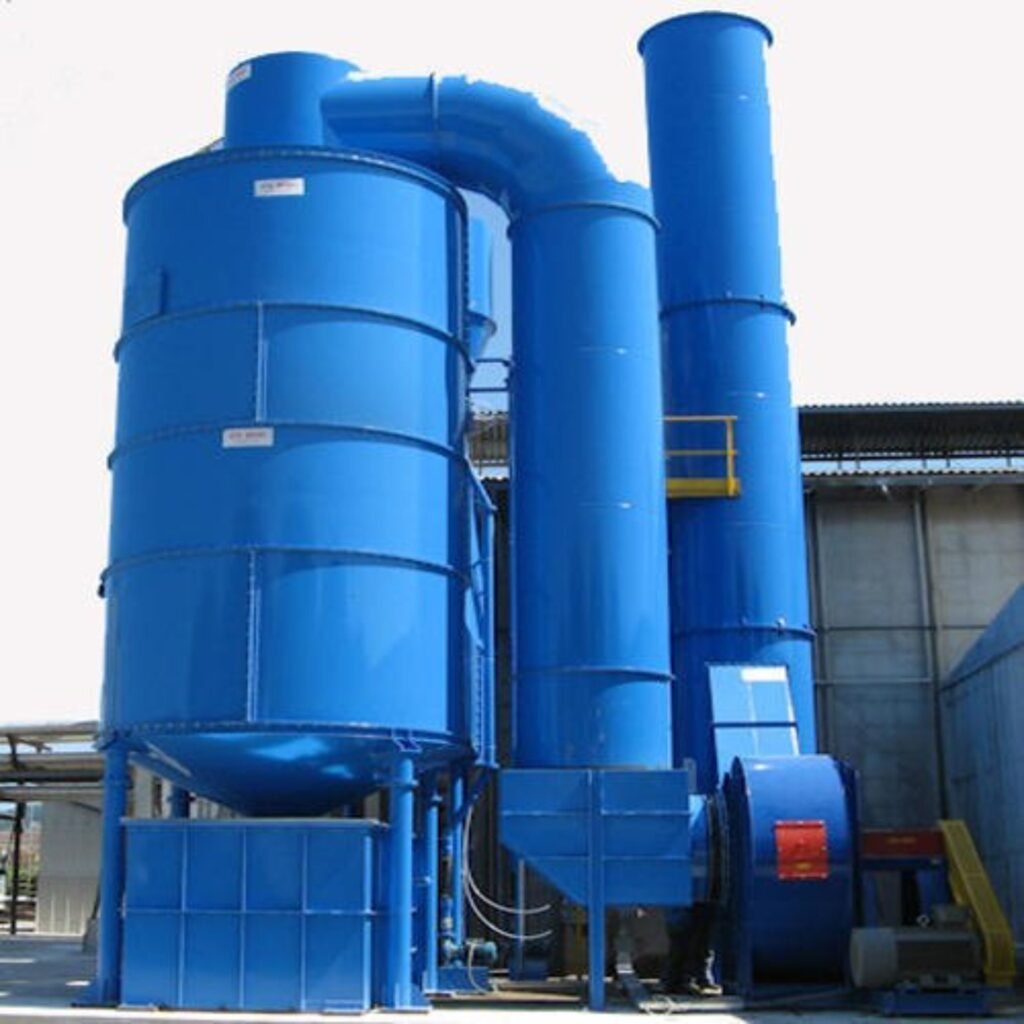A dry scrubber is a type of air pollution control device used to remove harmful gases and particulates from industrial exhaust gases. Unlike wet scrubbers that use a liquid to capture pollutants, dry scrubbers use a dry sorbent or material to chemically react with and capture pollutants from the gas stream.
The basic operation of a dry scrubber involves passing the polluted gas stream through a chamber or vessel where the dry sorbent material, such as lime, limestone, or activated carbon, is introduced. The pollutants in the gas stream react with the sorbent, either through adsorption, absorption, or chemical reaction, resulting in the capture and removal of the contaminants from the gas stream.
Dry scrubbers are commonly used to control emissions of acidic gases, such as sulfur dioxide (SO2) and hydrogen chloride (HCl), as well as certain volatile organic compounds (VOCs) and hazardous air pollutants (HAPs). They are found in various industrial applications, including power plants, waste incinerators, metal smelting operations, and chemical processing facilities.
Advantages of dry scrubbers include lower water usage compared to wet scrubbers, reduced wastewater generation, and the ability to handle high-temperature gas streams. However, they may require careful selection of the appropriate sorbent material and may have limitations in capturing certain types of pollutants.
To get a more in-depth understanding of dry scrubbers and their applications, consider referring to reputable sources such as environmental engineering textbooks, peer-reviewed articles, and industry guidelines.

